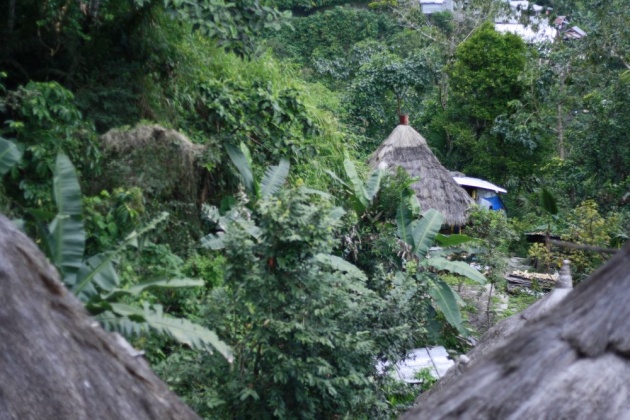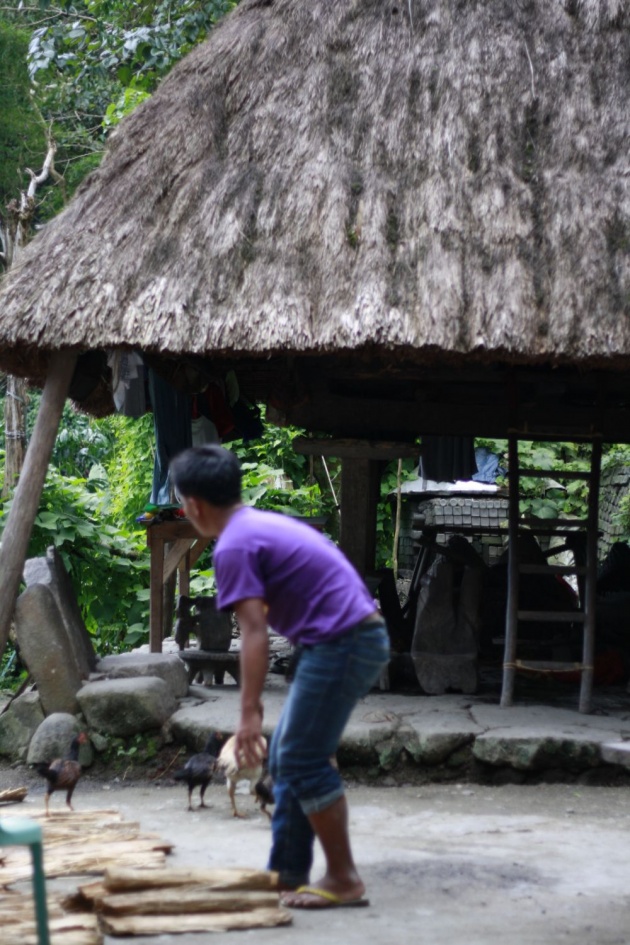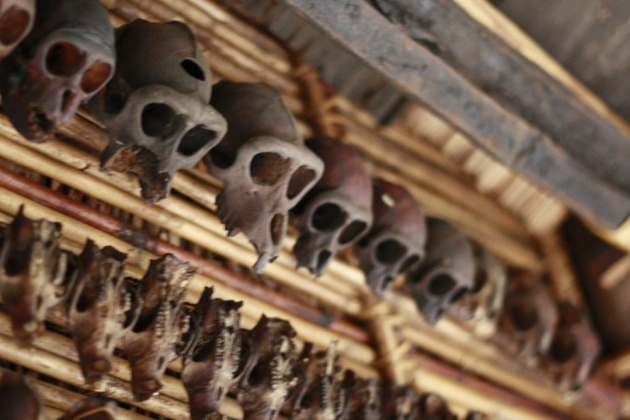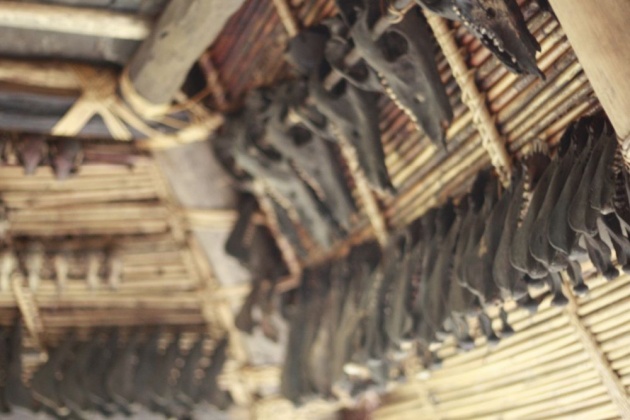Today's blog is a throwback to last year's travel to Batad's famous Rice Terraces, one of which I dearly treasure a lot out. It was a type of travel where both James and I had learned so many things about both the country, the tourist spot and ourselves as Filipino human beings.

Image credits: Jean Beltran via bitLanders
We struggled but also enjoyed this trip which is why we couldn't forget this experience. I had personally created several blogs about this trip, we both managed to compile videos, wrote reviews and travel stories about how that four days, three nights went and how it is a place which we should go back again in the future.
Read these related blogs:
• Batad Rice Terraces Day Tour
• En Route Batad: Total Commute and Expenses
The Philippines is made of high and low lands, there are beaches, there are mountains, its full of beautiful people, of gorgeous tourist spots, of rivers and waterfalls even with underwater glory. Truly, the country is blessed to have all these natural resources.
But above all, we have culture! We have beliefs, faith, instinct, history, and practices which unfortunately has been degrading, we are losing that identity, only a few have retained it and sooner or later, the future generation may not be aware of these things anymore because admit it or not, we are being eaten by our love of the other civilization's culture. It is killing our own and it is sad.

Image credits: Jean Beltran via bitLanders
Today, let me share with you, Batad's amazing structure - their Ifugao Huts, the traditional ones. Let's take a closer look at the details and their ethnic ceremonials as well as rituals when building and living this house.
These things I have learned whilst we were in Batad however, I for some reasons didn't pursue blogging about it before thinking I have no resources available to complete the blog such as enough photos but I desire to push this and so I am blogging it today.
Finding a Land, Deciding Where to Build the Hut
A Munhabat or local carpenter together with the couple who would like to build their new home has to find a land which they believe is given to them by the Maker. In the old times, Ifugaos would oftentimes depend on their beliefs in building everything and even in deciding on their lives.

Image credits: Jean Beltran via bitLanders
In finding a land, the couple will have to look for a spot which has a land sturdy enough and is free from any dangerous predators. One way to test it is to leave rice straws full of rice grains overnight. If by the morning they see this to be intact without a sign of being eaten by an animal, the spot is perfect for their new home, however, if the rice grains become missing by the next day, this is a no-good land and so they have to look further and forget about this.
Now if they find no harm in this land, they'll start with the construction. But first, rock stones have to be placed in the base of the land. Flatted huge rocks will be established in the base and which becomes the first floor of the house.
Video credits: Jean Beltran via bitLanders
This becomes an area where the family can entertain their guests, keep their animals and perform certain rituals too! These huge rocks are also to keep the wooden posts of the house secured from any storms or typhoons that may come in the way.
Bale or the Ifugao Traditional Hut

Image credits: Jean Beltran via bitLanders
There are different types of Ifugao houses. Depending on the family class, these houses differ in certain ways but they are similar in a lot of angles. The most common Ifugao house though in Batad is the Bale, this is a one room type of house with an attic, it looked like a pyramid because of its triangular roof design and the structure being supported by huge wooden posts.
The ritual now starts as the local start building the Ifugao hut house, from finding the best tree to be cut down, to the time of construction, certain guides has to be followed. One of the most unique traditions for me is to not perform any sexual intercourse during the span of time until it is finished, this includes the workers, the carpenters and the owner of the house.

Image credits: Jean Beltran via bitLanders
Every single portion of the house has functions and names, there are discs in the posts which avoids the rats and other types of animals from climbing to the second floor. It is a wonder how the Munhabats were able to build this without the use of nails or even bolts. They are tied together in wonder because although there is no certain technology used, this traditional architecture had endured through time.
The removable ladder enables the family members to reach the second floor of the house, this is where they can sleep, cook and eat. There are no windows too but only a fireplace where the mother or the female members of the household could cook.
Video credits: Jean Beltran via bitLanders
The third floor of the house is used as a storage area where the family's rice harvest is stored for months until they need one for their consumption.
Building a house in Batad shows the Filipino trait referred to as Bayanihan. In a small community as Batad, the workers here who builds the houses are not paid, they do it out of community service, another trait that is slowly losing in this generation.
Cultural Ritual Before Living the House
Image credits: januaryroads
Before the family starts living in their newly built home, a specific tradition needs to be held, a chicken has to be offered and its internal organs be examined by a Mumbaki.
Mumbakis are what they refer as spiritual guides of the locals here in Batad. He will be offering the chicken to their ancestors in exchange for spiritual guidance to the new house to keep them away from any bad elements, bad luck or negative spirits. The blood of the chicken will be mixed with certain ingredients, a liquid in that case and they'll be drinking that solution afterward together with the house owners.

Image credits: inneriart via hiveminer
This specific activity is very similar to what the people of the Visayas referred as "Padugo".
Legacies to the Future Generation

Image credits: Jean Beltran via bitLanders
Ifugaos are sculptures in nature, they have this innate talent for carving, perhaps these are the talents and skills passed by their ancestors and is continuously being taught to their new generation. So their houses will be filled with these items. Today, these carvings are also being sold as souvenir items to tourists and local guests.

Image credits: Jean Beltran via bitLanders
Aside from that, the families here take pride in decorating their houses with bone remains of those animals that they had killed. Most animals which they have killed are because of rituals as well. It signifies the strength and courage of the male members of the family. Most of the animal bones displayed are those of local Buffalos and Tamaraws.
These are displayed so that the future generation would be reminded of how their ancestors had been resilient and brave in facing their life challenges so they can also be strong in their own feet as they face the life without their elders.

Image credits: Jean Beltran via bitLanders
The relentless hard work of the beautiful people of Batad together with their understanding and creativity made it possible to build these hectares of rice terraces as well as their homes which can withstand the test of weather and time. Up to this very minute, these houses which are already century old are still strong and standing even after all the challenges and weather conditions in the country.
I personally appreciate this tradition, the richness of our culture as Filipinos, its diversity and I am glad that there are still people who are aware and are still spreading the information and exercising this specifically in Batad. Even the educational members of Batad had requested the Department of Education that their Ifugao cultural be integrated into the current educational curriculum so the new generation of Batad or the Banaue, in general, would be aware and would live through them their own personal culture.
This blog entry was written and published by Jean Beltran-Figues for bitlanders.com.



